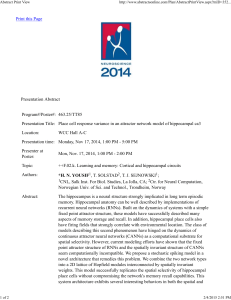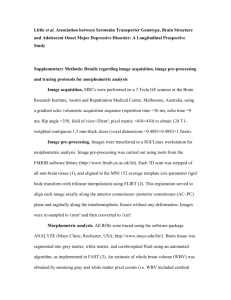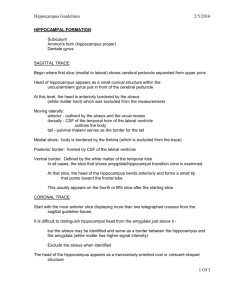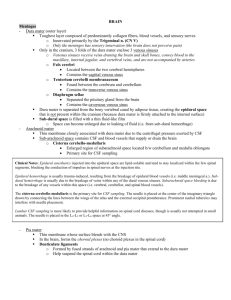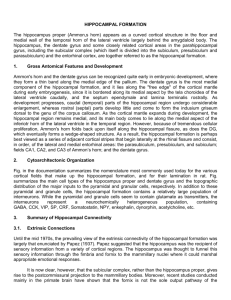Supplemental Information Hippocampal tracing. This tracing
advertisement
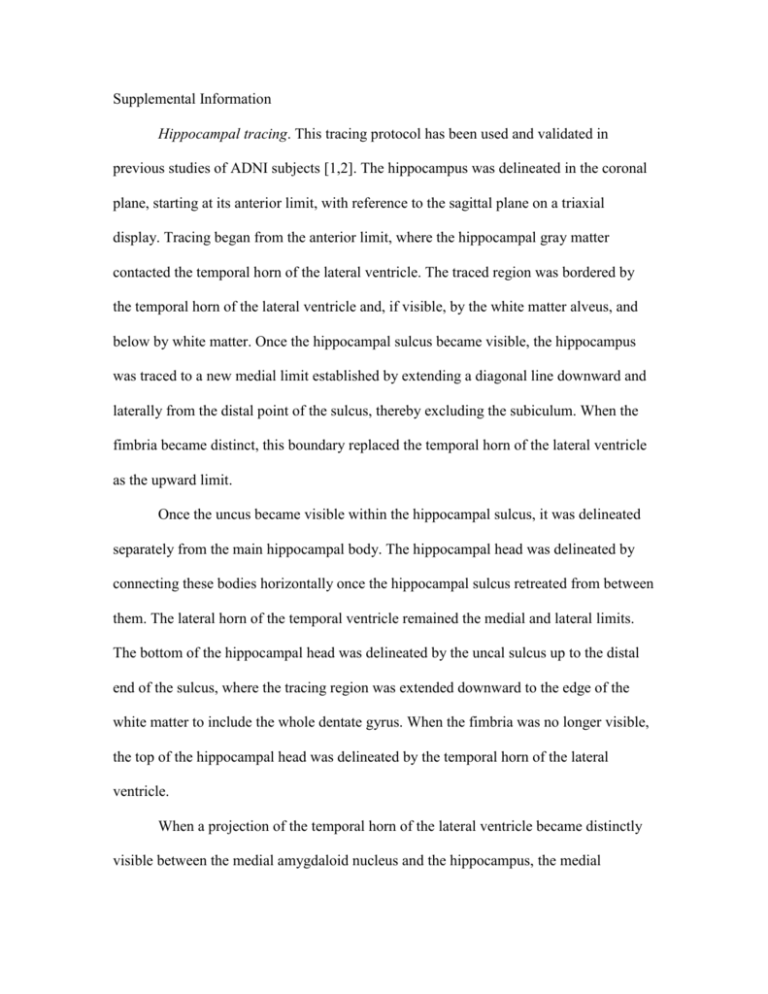
Supplemental Information Hippocampal tracing. This tracing protocol has been used and validated in previous studies of ADNI subjects [1,2]. The hippocampus was delineated in the coronal plane, starting at its anterior limit, with reference to the sagittal plane on a triaxial display. Tracing began from the anterior limit, where the hippocampal gray matter contacted the temporal horn of the lateral ventricle. The traced region was bordered by the temporal horn of the lateral ventricle and, if visible, by the white matter alveus, and below by white matter. Once the hippocampal sulcus became visible, the hippocampus was traced to a new medial limit established by extending a diagonal line downward and laterally from the distal point of the sulcus, thereby excluding the subiculum. When the fimbria became distinct, this boundary replaced the temporal horn of the lateral ventricle as the upward limit. Once the uncus became visible within the hippocampal sulcus, it was delineated separately from the main hippocampal body. The hippocampal head was delineated by connecting these bodies horizontally once the hippocampal sulcus retreated from between them. The lateral horn of the temporal ventricle remained the medial and lateral limits. The bottom of the hippocampal head was delineated by the uncal sulcus up to the distal end of the sulcus, where the tracing region was extended downward to the edge of the white matter to include the whole dentate gyrus. When the fimbria was no longer visible, the top of the hippocampal head was delineated by the temporal horn of the lateral ventricle. When a projection of the temporal horn of the lateral ventricle became distinctly visible between the medial amygdaloid nucleus and the hippocampus, the medial amygdaloid nucleus was excluded by tracing the hippocampal head to an upper limit defined by a line extended horizontally from the lateral ventricle projection’s distal end. Once this projection of the lateral ventricle began to retreat laterally, the hippocampal head was traced medially to a vertical line extended from the distal end of the lateral ventricle, excluding the uncus and subiculum. The posterior endpoint for tracing was the point at which the lateral ventricle was no longer visible above the hippocampus. The sagittal plane was consulted to smooth irregularities. [1] [2] Morra JH, Tu Z, Apostolova LG, Green AE, Avedissian C, Madsen SK et al. Validation of a fully automated 3D hippocampal segmentation method using subjects with Alzheimer's disease mild cognitive impairment, and elderly controls. Neuroimage 2008; 43: 59-68. Morra JH, Tu Z, Apostolova LG, Green AE, Avedissian C, Madsen SK et al. Automated mapping of hippocampal atrophy in 1-year repeat MRI data from 490 subjects with Alzheimer's disease, mild cognitive impairment, and elderly controls. Neuroimage 2009; 45: S3-15.

